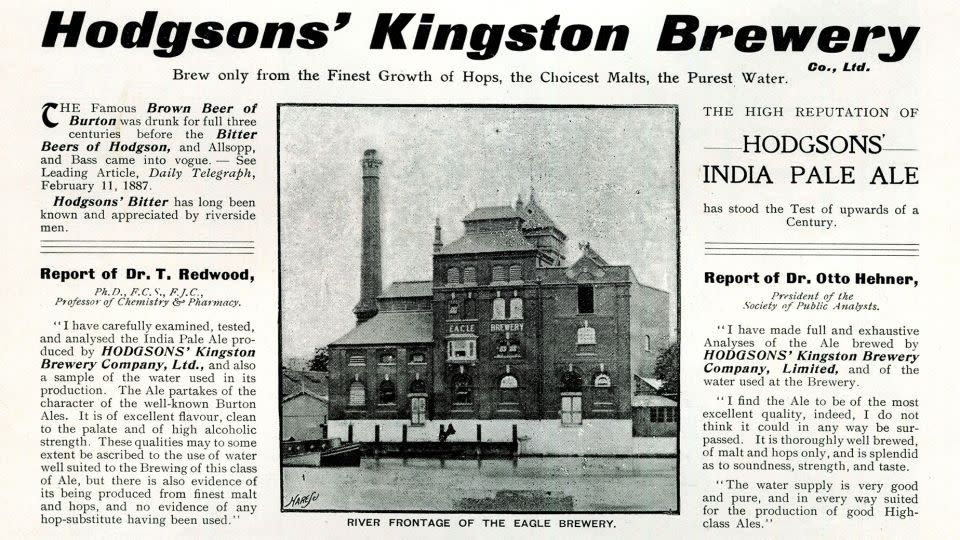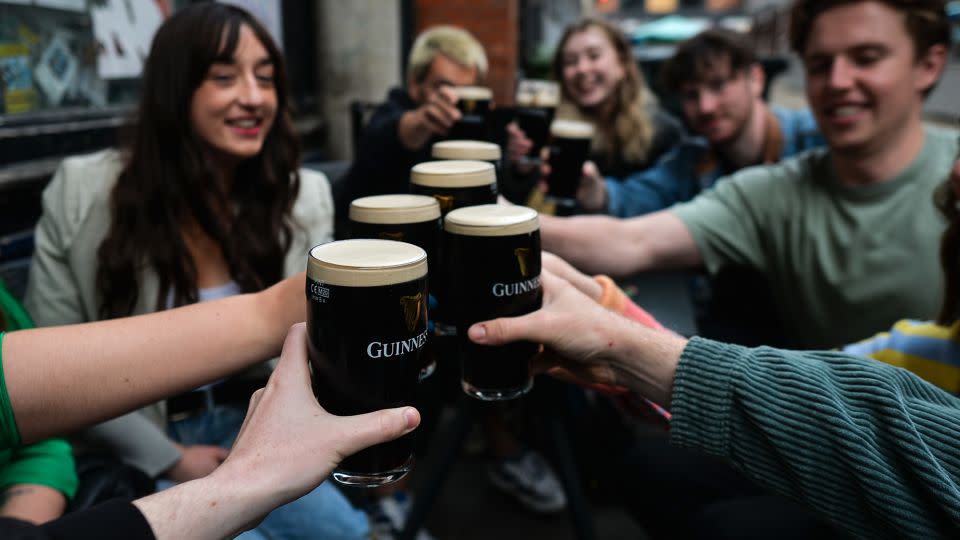What is an IPA? A deliciously happy accident of beer history or the colonial marketing of a frugal recipe?
“Do you know where IPAs come from?” I have asked many a friend, with my elbow angled upon the bar holding “exhibit B” in a pint glass, and hoping they don’t already know the answer.
Heaven? The hop fairy? My dreams? All good guesses, but no.
“When the British occupied India,” I begin my drinking-man-splaining of the beer’s superhero origin story, “the troops over there were entitled to a regular ration of ale. And because no one knew how to brew beer on the colonized subcontinent, the Brits shipped their delicious pale ale to India by, er, ship.
“But the problem was that, unrefrigerated, the goods would skunk on the way. So, the solution was to add extra yeast and hops to keep the beer cultures alive for the long journey. Therefore, what the rank and file in India drank was a stronger, hoppier cousin of the ale they imbibed back in England.
“After Gandhi got the British to leave, the soldiers packed up and went home. Only, they had developed a fondness, and created a market demand, for the extra hoppy ale made just for India, or India Pale Ale. And thus, a star is born.”
“No!” said Malcolm Purinton over email, when I shared my version of the IPA origin story, which someone once told me.
Purinton is a beer historian and scholar who teaches world and food history at Northeastern University in Boston. He immediately poked holes in some of the premises of my story. “By the time the British were colonizing India, they had already been shipping beer across countries and oceans for centuries! You’ve heard of the Mayflower?” he replied.
The real origin of IPAs and the reason for their name
While the beer shares a history with India and the British Empire, the IPA moniker owes more to national pride and business savvy than ingenuity.
Credit for popularizing the pale ales sent to India goes to a brewer named George Hodgson, who invented a hoppy ale he named after himself. Hodgson’s Ale was of a type known at the time as October Beer because its recipe originated with the low cost of hops in the fall, explained Purinton, who wrote the book, “Globalization in a Glass: The Rise of Pilsner Beer through Technology, Taste and Empire.”

Hodgson had an exclusive beer contract with the British East India Company. He supplied the company – which in turn supplied India’s British – with Brown ales, porters and his October Beer, a “stronger, hoppier and more bitter cousin of the regular pale ale,” said Purinton.
In the 1820s and ‘30s, Hodgson’s competitors gave the October Beer style a new name, India Pale Ale, merely to evoke their patrons’ sense of imperialist pride.
So, the answer to my question of where IPAs came from, is from the competition of British breweries for overseas markets and the very enterprising George Hodgson who at least popularized it, if not named it. Less of a simple story, but the truth.
What about APAs, DIPAs and NEIAs?
On current beer menus you often see other acronyms, such as APAs. These are American Pale Ales that use mostly American hops and are lower in alcohol (“basically a pale ale with American hops,” Purinton said on the phone).
If you see DIPA, that’s a Double IPA, meaning more hops and alcohol content.
NEIPA means New England IPA, containing more “fruit-forward” hops and flavors than an IPA, and is essentially the same thing as a “hazy”or “juicy” IPA.
What about those other beer types?
This isn’t an exhaustive list, and some are obvious (sours are, er, sour), but Purinton shared the British name origin of what he says was the first modern industrial beer.
It was “named for the porters, the men who carried goods off the ships at the docks to the shops, markets and homes across London,” he said, and the porters “loved that dark, toasty beer so much that everyone started calling it ‘Porter.’ ”
Stout is a stronger version of a porter that became its own style. “The Guinness family were just copying the popular London porters/stouts when they started brewing their own beer in Dublin,” Purinton shared.
The difference between ale and lager is found in the brewing process. They have different yeasts and are fermented with warmer water for a batch of ale, or with cooler temperatures for lagers. Lager also rests longer before being served. “Lager is German for ‘to store,’ ” Purinton explained.
And a Pilsner is a golden style of lager, born out of the Czech Republic town of Pilsen.
What’ll ya have?

Getting thirsty during our chat, I asked Purinton for his favorite IPA-style beers.
He loves the Focal Banger by Alchemist Brewing Co. and the Sip of Sunshine IPA by Lawson’s Finest Liquids. The beer historian also praised Sierra Nevada’s Pale Ale as a consistent and delicious all-time favorite.
My best-loved in this category are Lagunitas IPA, Racer 5 by Bear Republic and Dogfish Head’s 90 Minute IPA.
Cheers to those, and to George Hodgson for kickstarting the delicious trend, and to Malcolm Purinton for setting the record straight.
For more CNN news and newsletters create an account at CNN.com
